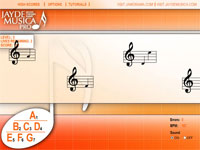Playing The Piano Using Chord Symbols Instead of Being Tied To The Written Sheet Music
>> Dont Even Think Of Trying Other Prodicts untill You Read This <<
Piano improvising and arranging is an art but definitely not a science. It is all based on chords and chord progressions. There aren't any steadfast rules for creating an arrangement, nothing to dictate the limitless potential of your imagination. Musicians learn to arrange by simply arranging and improvise by improvising -- over and over again. It's a big game of trial and error. But it's also a scientific method: you keep the experiments that work, and abandon those that don't work.
That being said, there are a few things that can help you in the knowledge of piano improvization. Don't think of these as rules, but rather points on a roadmap guiding you through the vast world of arrangement and improvisation possibilities.
The first step, of course, is to learn as much as you can about chords and how they work. Once you get a handle on piano chords and the chord symbols that represent them such as Fm7, G9, D, C7, etc., you can then learn how to break those chords up in various patterns.
Learn several different chording patterns, such as open voicing, arpeggios, upward inversions, western bass, Alberti bass, swing bass or boogie bass. This course guides you through these techniques, in addition to others, and teaches you to understand when they're the most appropriate.
Learn some right hand fillers, like octaves (and the multitude of harmonic possibilities associated with octaves), tremelos, grace notes, twangs, runs, and turnarounds. Again, this course teaches you these fills and several others.
Study pre-arranged sheet music. Your local music shop will have tons of music books containing several arrangements; read and play through these in detail. Seeing what other people have done with various pieces of music will help you understand the art of arrangement and also introduce you to new techniques!
Dig into different musical styles, like ragtime, blues or country-western. Pick up some compilation CDs focusing on a particular style of music or purchase some piano sheet music specializing in the style. Understanding the fundamental elements of various styles will help you learn to arrange any song in that particular style -- or just add a few stylized elements to any arrangement.
Jump online and type in "chord piano" or "piano chords" into your search browser, and you will come up with a zillion choices where you can learn all you need to know about chords in a reasonably short time. It's not rocket science, and once you learn a few piano chords, you probably will become addicted to chords and their application to your piano playing.
Duane Shinn is the author of the popular free 101-week online e-mail newsletter titled "Amazing Secrets Of Exciting Piano Chords & Sizzling Chord Progressions- Intelligent Piano Lessons For Adults Only! " with over 84,400 current subscribers.
Labels: along_baby_leapfrog_learn_piano, free_learn_lesson_online_piano_piano_play, learn_piano_dvd, learn_to_play_latin_piano, learn_to_play_piano_online

